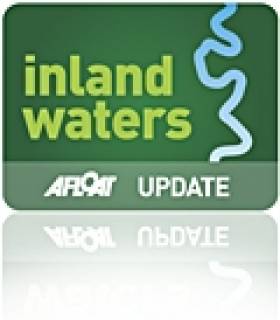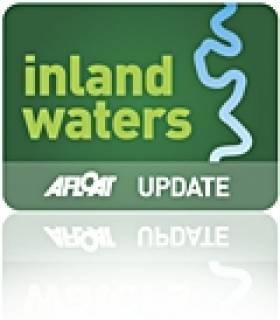Displaying items by tag: Royal Canal
Waterways Ireland Celebrates Restoration of the Royal Canal
Celebrations for Royal Canal Reopening
Waterways Ireland in conjunction with a working committee will mark the completion of the main line of the Royal Canal on the inland waterways with an event that will take place in Richmond Harbour, Clondra, Co. Longford on the 1st October as part of a weekend of festivities. This event is the culmination of not only 36 years of campaigning by the Royal Canal Amenity Group (RCAG) but a summer of waterside events moving East to West; boaters and waterside communities have been celebrating the reawakening of the Royal Canal each weekend leading up to the main event.
The formal event will take place on October 1st at 2pm, with a flotilla of boats arriving into Richmond Harbour. The flotilla will include boats from each branch of the RCAG as well as the Heritage Boat Association, Inland Waterways Association of Ireland, the supporters of the Canal d'Nivernais, representatives of the Wilderness Boats. The flotilla will be lead by Royal Canal Barge no 3 (also known as the Killucan Barge). The formal event will be followed by a weekend of celebrations organised by the Clondra Branch of the RCAG and supported by Waterways Ireland. The weekend festivities are open to all.
The Royal Canal is a highly significant and historic public amenity. 145.6km long, the Royal Canal stretches from Dublin to the Shannon passing through Dublin, Kildare, Meath, Westmeath and Longford. 1.2 million people live within this catchment making the Royal Canal one of the largest public amenities on the island.
Royal Canal Reopening Celebrations
Waterways Ireland has hosted the first meeting of the working committee involved in planning the celebrations to mark the reopening of the Royal Canal on the inland waterways. The reopening is intended to take place in September 2010 and will be preceded by a series of events marking the new life given to this highly significant and historic public amenity. 145.6km long, the Royal Canal stretches from Dublin to the Shannon passing through Dublin, Fingal, Kildare, Longford, Meath, and Westmeath. 1.2 million people live within this catchment making the Royal Canal one of the largest public amenities on the island. The councils representing this catchment are all participating in the working committee.
The reopening of the Royal Canal marks 36 years of campaigning by the Royal Canal Amenity Group who in conjunction with the Inland Waterways Association of Ireland and the Heritage Boat Association will be participating in the working committee. There will be a formal permanent recognition of the years of work the past and present members have contributed to saving the canal.
The sporting organisations along the Royal Canal including the National Coarse Fishing Federation of Ireland and the Kilcock Canoe Polo Club are also committed to making the Royal Canal Reopening Celebrations participatory for people living along its banks.
Waterways Ireland Director of Marketing & Communications Martin Dennany said ‘The Reopening of the Royal Canal is the beginning of a new era for the Royal Canal as a navigable waterway and an accessible public amenity. Waterways Ireland is delighted to work in partnership to celebrate it reopening and look forwards to its increased use in the coming years”
The Royal Canal Reopening Celebrations Working Committee will be meeting regularly to plan and activate events all along the Royal Canal.

























